Ammonia Distribution Measurement on a Hot Gas Test Bench Applying Tomographical Optical Methods †
Abstract
1. Introduction
1.1. Legislation
1.2. Selective Catalytic Reduction
1.3. Ammonia Concentration
1.4. Tomography
2. Materials and Methods
2.1. Absorption Spectroscopy
2.2. Nondispersive Single-Beam Detection System
2.3. Beam Arrangement Design
2.4. Tomographical Reconstruction
2.5. Weighting Parameter Optimization
2.6. Measurement Procedure
2.7. Hot Gas Test Bench
3. Results
3.1. Tomographical Optical Ammonia Detector Prototype
3.2. Experiment 1: Injection on a Flat Plate
3.3. Experiment 2: Injection into an S-Shaped Pipe
4. Discussion
5. Conclusions
Author Contributions
Funding
Conflicts of Interest
Abbreviations
| NH3 | ammonia |
| DUV | deep ultraviolet |
| UV | ultraviolet |
| NIR | near-infrared |
| MIR | mid-infrared |
| TIA | transimpedance amplifier |
| SNR | signal-to-noise ratio |
| SCR | selective catalytic reduction |
| NOX | nitrogen oxides |
| NO | nitric oxide |
| NO2 | nitrogen dioxide |
| H2O | water |
| CO2 | carbon dioxide |
| RDE | real driving emission |
| NEDC | New European Driving Cycle |
| UWS | urea water solution (AdBlue®) |
| CFD | computational fluid dynamics |
| CAD | computer-aided design |
References
- Hooftman, N.; Messagie, M.; Mierlo, J.V.; Coosemans, T. A review of the European passenger car regulations—Real driving emissions vs local air quality. Renew. Sustain. Energy Rev. 2018, 86, 1–21. [Google Scholar] [CrossRef]
- Degraeuwe, B.; Weiss, M. Does the New European Driving Cycle (NEDC) really fail to capture the NOX emissions of diesel cars in Europe? Environ. Pollut. 2017, 222, 234–241. [Google Scholar] [CrossRef] [PubMed]
- Lozhkina, O.V.; Lozhkin, V.N. Estimation of nitrogen oxides emissions from petrol and diesel passenger cars by means of on-board monitoring: Effect of vehicle speed, vehicle technology, engine type on emission rates. Transp. Res. Part D Transp. Environ. 2016, 47, 251–264. [Google Scholar] [CrossRef]
- Koebel, M.; Elsener, M.; Kleemann, M. Urea-SCR: A promising technique to reduce NOx emissions from automotive diesel engines. Catal. Today 2000, 59, 335–345. [Google Scholar] [CrossRef]
- Kroecher, O. Selective Catalytic Reduction of NOx. Catalysts 2018, 8, 459. [Google Scholar] [CrossRef]
- Sala, R.; Dzida, J.; Krasowski, J. Ammonia Concentration Distribution Measurements on Selective Catalytic Reduction Catalysts. Catalysts 2018, 8, 231. [Google Scholar] [CrossRef]
- Suarez-Bertoa, R.; Zardini, A.; Astorga, C. Ammonia exhaust emissions from spark ignition vehicles over the New European Driving Cycle. Atmos. Environ. 2014, 97, 43–53. [Google Scholar] [CrossRef]
- Suarez-Bertoa, R.; Astorga, C. Isocyanic acid and ammonia in vehicle emissions. Transp. Res. Part D Transp. Environ. 2016, 49, 259–270. [Google Scholar] [CrossRef]
- Suarez-Bertoa, R.; Mendoza-Villafuerte, P.; Riccobono, F.; Vojtisek, M.; Pechout, M.; Perujo, A.; Astorga, C. On-road measurement of NH3 emissions from gasoline and diesel passenger cars during real world driving conditions. Atmos. Environ. 2017, 166, 488–497. [Google Scholar] [CrossRef]
- McKinley, T.; Alleyne, A.; Lee, C.F. Mixture Non-Uniformity in SCR Systems: Modeling and Uniformity Index Requirements for Steady-State and Transient Operation. SAE Int. J. Fuels Lubr. 2010, 3, 486–499. [Google Scholar] [CrossRef]
- Brzeżański, M.; Sala, R. A study on the indirect urea dosing method in the Selective Catalytic Reduction system. IOP Conf. Ser. Mater. Sci. Eng. 2016, 148, 012062. [Google Scholar] [CrossRef]
- Sala, R.; Bielaczyc, P.; Brzezanski, M. Concept of Vaporized Urea Dosing in Selective Catalytic Reduction. Catalysts 2017, 7, 307. [Google Scholar] [CrossRef]
- Hole, O. Measuring Ammonia—Development and Application of Measurement Techniques for the Detection of Ammonia. Master’s Thesis, University of Lund, Lund, Sweden, 2012. [Google Scholar]
- Hodgkinson, J.; Tatam, R.P. Optical gas sensing: A review. Meas. Sci. Technol. 2013, 24, 012004. [Google Scholar] [CrossRef]
- Daun, K. Infrared Species Limited Data Tomography Through Tikhonov Reconstruction. J. Quant. Spectrosc. Radiat. Transf. 2010, 111, 105–115. [Google Scholar] [CrossRef]
- Terzija, N.; Davidson, J.L.; Garcia-Stewart, C.A.; Wright, P.; Ozanyan, K.B.; Pegrum, S.; Litt, T.J.; McCann, H. Image optimization for chemical species tomography with an irregular and sparse beam array. Meas. Sci. Technol. 2008, 19, 094007. [Google Scholar] [CrossRef]
- Twynstra, M.G.; Daun, K.J. Laser-absorption tomography beam arrangement optimization using resolution matrices. Appl. Opt. 2012, 51, 7059–7068. [Google Scholar] [CrossRef] [PubMed]
- McCann, H.; Wright, P.; Daun, K. 5—Chemical species tomography. In Industrial Tomography; Wang, M., Ed.; Woodhead Publishing Series in Electronic and Optical Materials; Woodhead Publishing: Sawston, UK, 2015; pp. 135–174. [Google Scholar] [CrossRef]
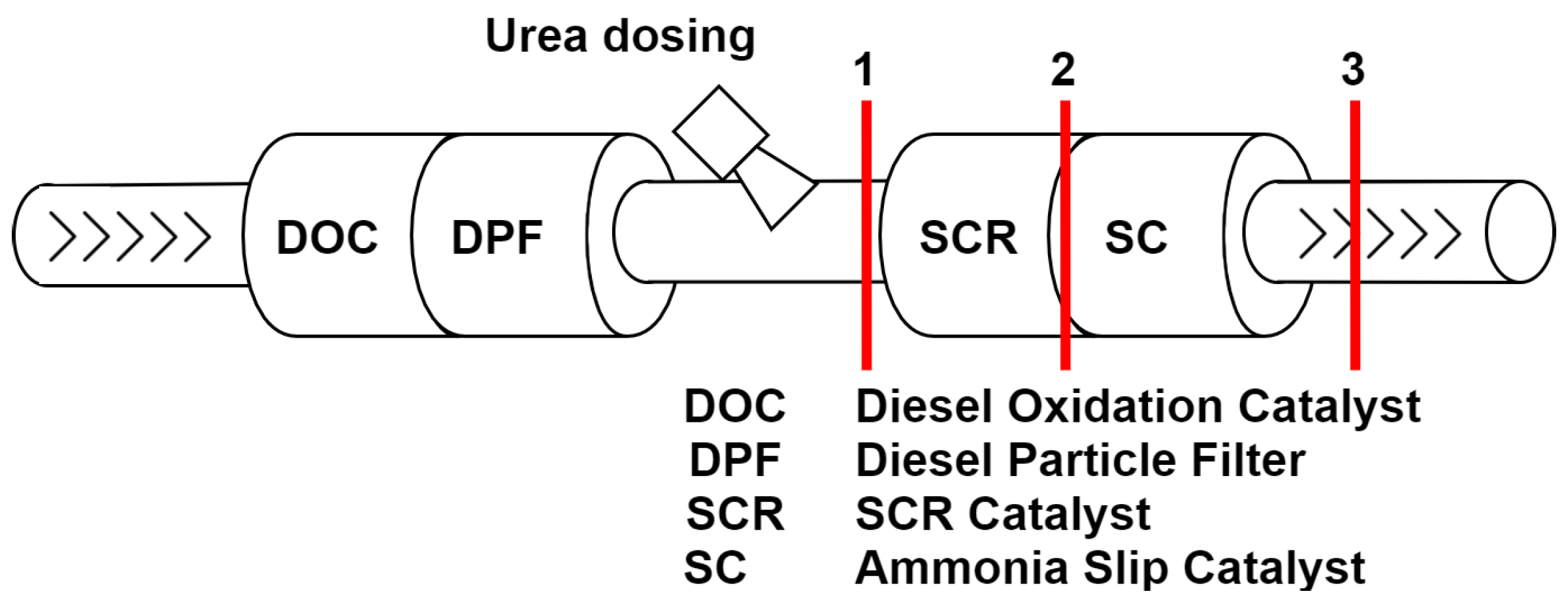

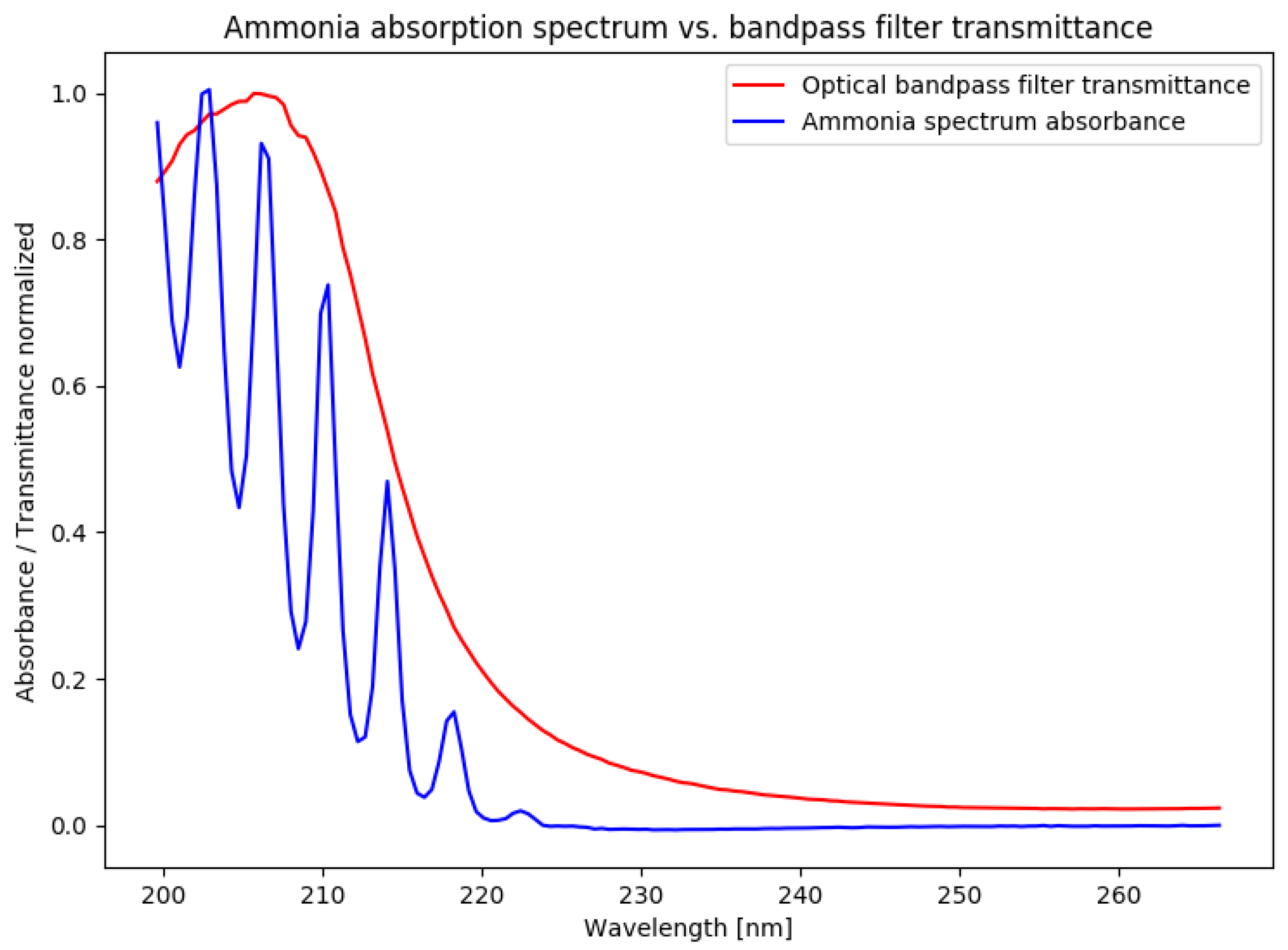
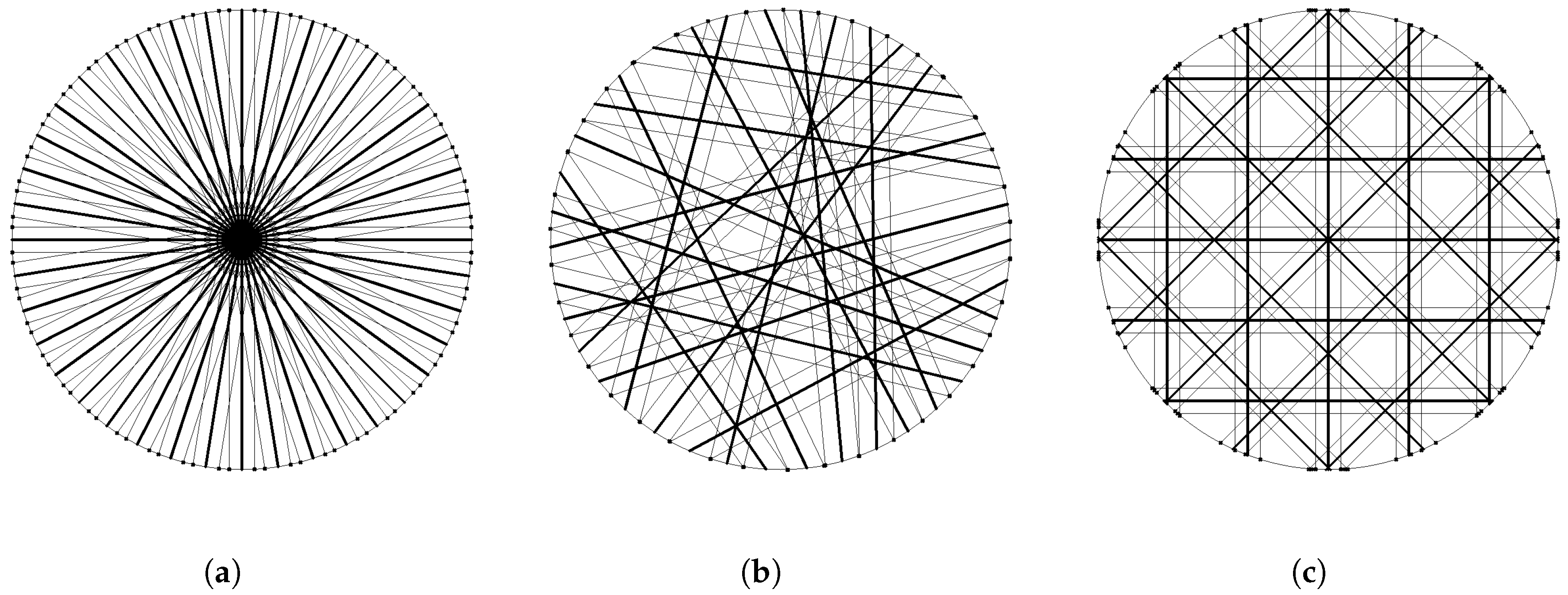
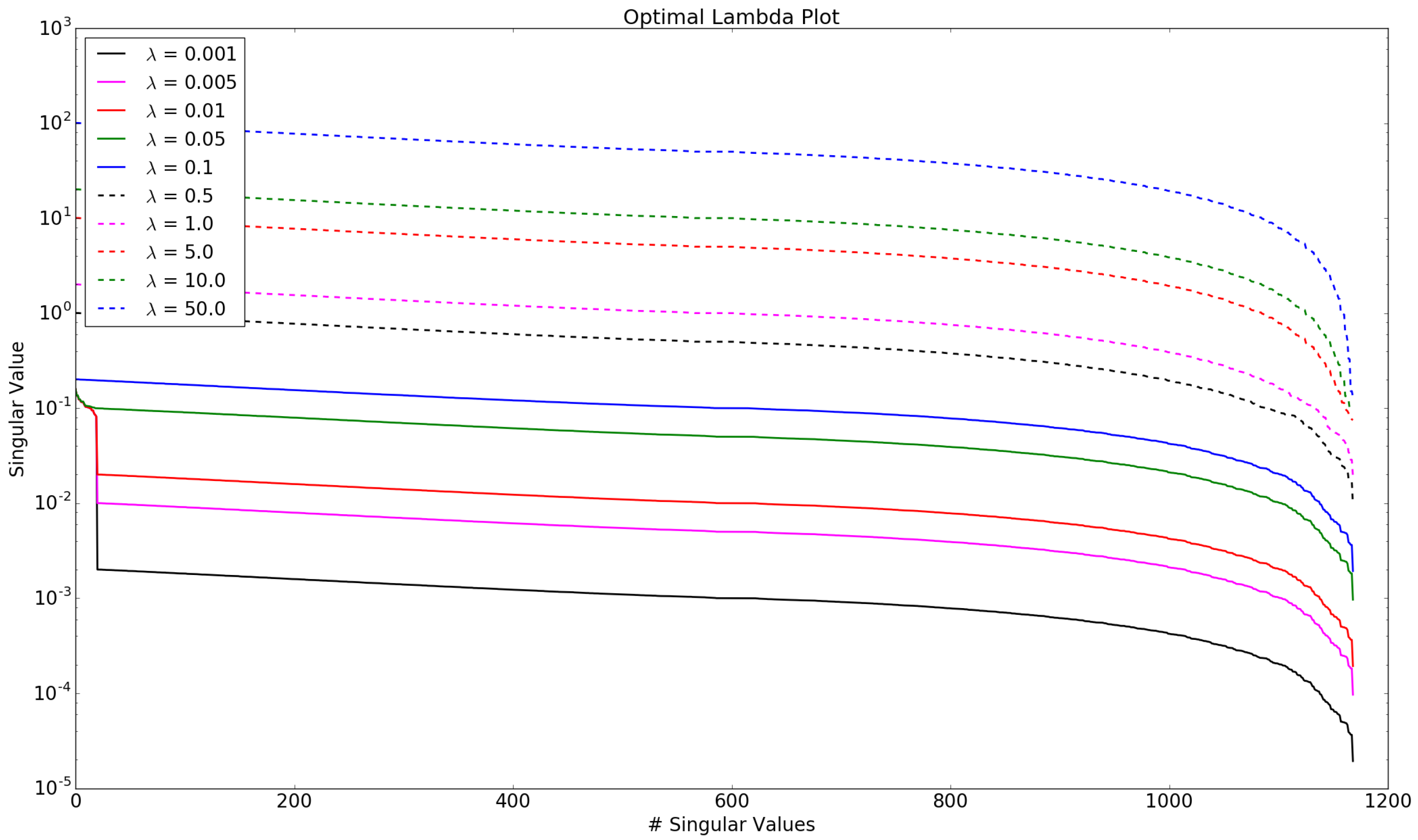


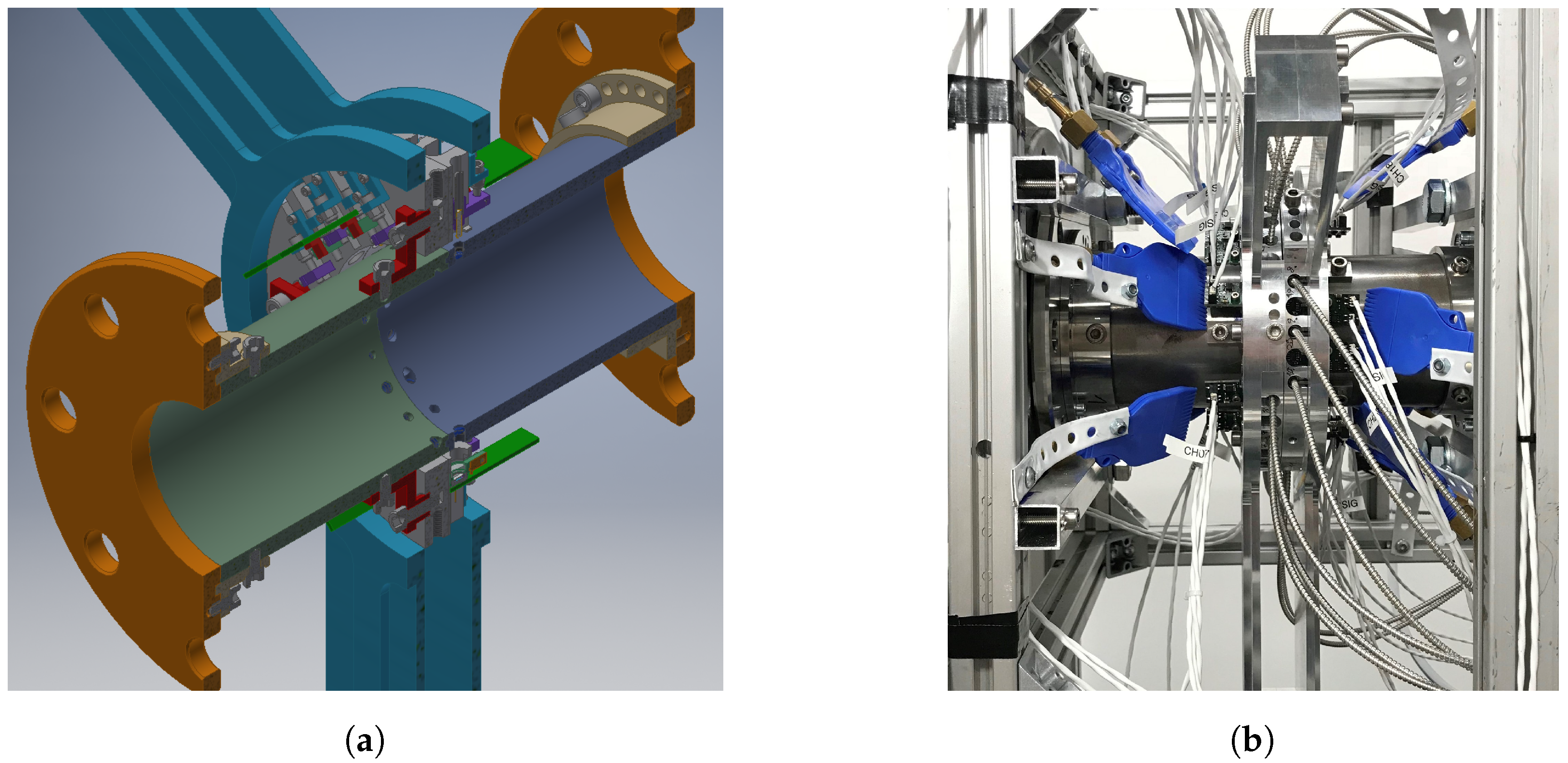


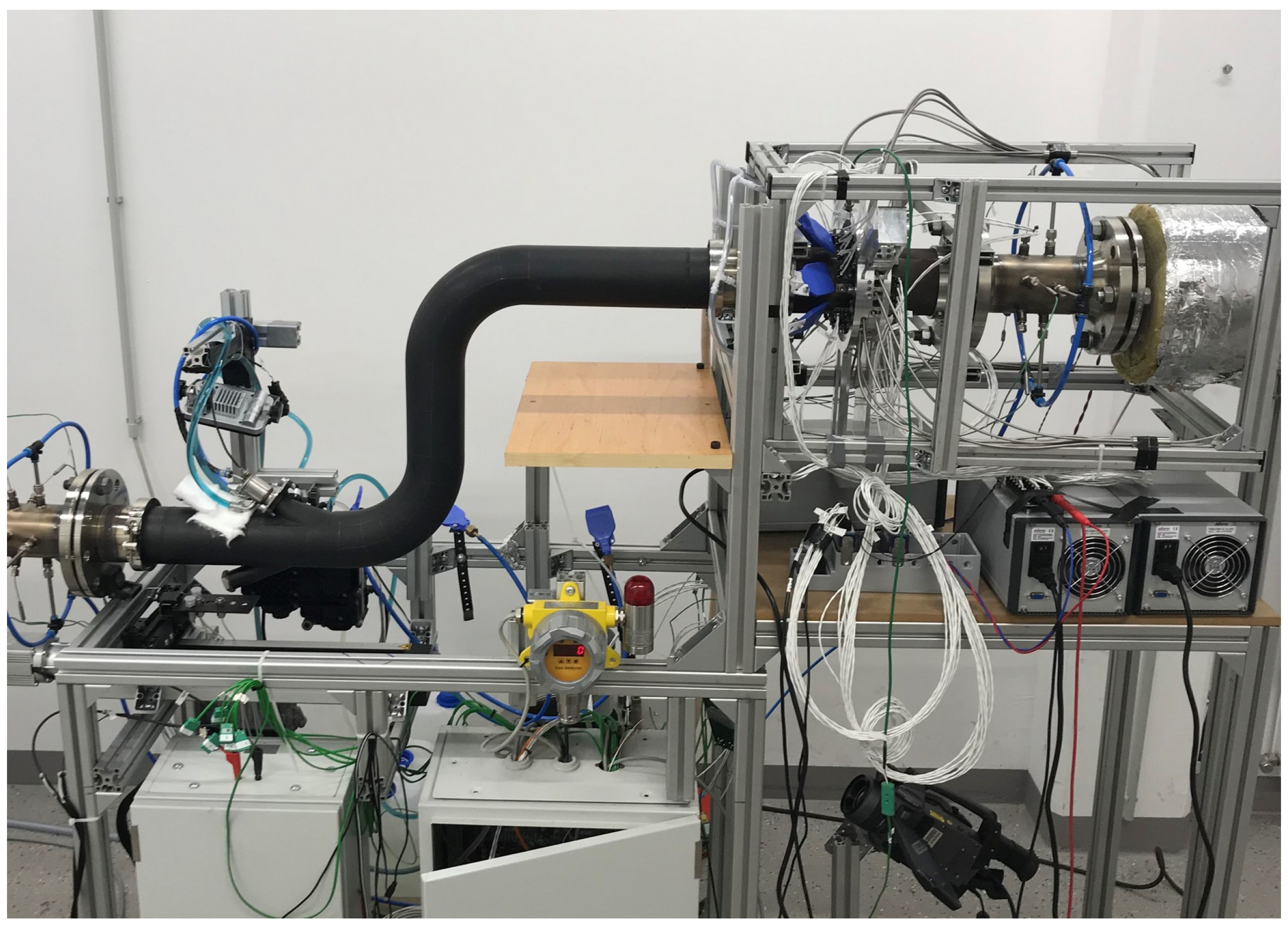
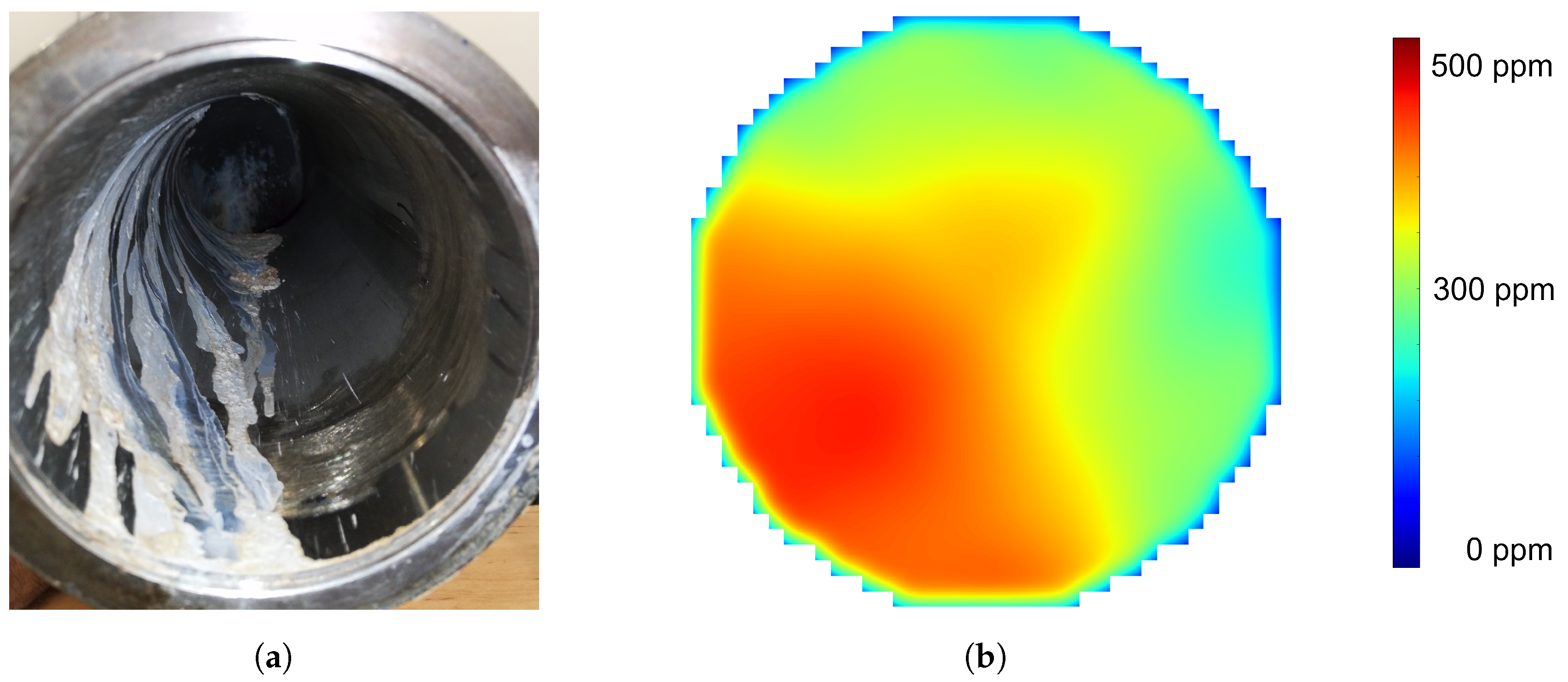
| Near-Infrared (NIR) | Mid-Infrared (MIR) | Deep Ultraviolet (DUV) | |
|---|---|---|---|
| spectral region | 1.6 μm | 10 μm | 210 nm |
| absorption coefficient | 10−21 cm2 | 10−18 cm2 | 2 × 10−17 cm2 |
| - - | o | +++ | |
| cost | ++ | - - | + |
| availability | wide variety of | hardly any | moderate price, |
| materials at a low | temperature-resistant | spectral limit for | |
| price | materials | fibers and filters | |
| ++ | - | o | |
| cross sensitivity | H2O | hot CO2 | NO, NO2 |
| - | + | - - |
© 2019 by the authors. Licensee MDPI, Basel, Switzerland. This article is an open access article distributed under the terms and conditions of the Creative Commons Attribution (CC BY) license (http://creativecommons.org/licenses/by/4.0/).
Share and Cite
Fischbacher, B.; Lechner, B.; Brandstätter, B. Ammonia Distribution Measurement on a Hot Gas Test Bench Applying Tomographical Optical Methods. Sensors 2019, 19, 896. https://doi.org/10.3390/s19040896
Fischbacher B, Lechner B, Brandstätter B. Ammonia Distribution Measurement on a Hot Gas Test Bench Applying Tomographical Optical Methods. Sensors. 2019; 19(4):896. https://doi.org/10.3390/s19040896
Chicago/Turabian StyleFischbacher, Bernhard, Bernhard Lechner, and Bernhard Brandstätter. 2019. "Ammonia Distribution Measurement on a Hot Gas Test Bench Applying Tomographical Optical Methods" Sensors 19, no. 4: 896. https://doi.org/10.3390/s19040896
APA StyleFischbacher, B., Lechner, B., & Brandstätter, B. (2019). Ammonia Distribution Measurement on a Hot Gas Test Bench Applying Tomographical Optical Methods. Sensors, 19(4), 896. https://doi.org/10.3390/s19040896





